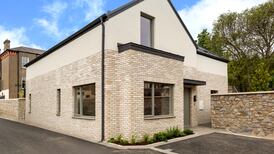I live in a 1970s bungalow and wish to address a mould problem. The mould forms below the ceiling along the solid concrete ring beam that tops the block cavity walls and windows. The rooms are ventilated and wall cavities have been injected with insulation. I suspect the ring beam is the cause of the problem, forming a cold bridge that causes condensation, resulting in the mould.
As a solution, I am considering retrofitted insulation but am concerned that if I opt for external insulation, it might not be possible to fully insulate the wall head owing to the roof construction, and that this may leave the wall head exposed and fail to fully address the cold bridge.
I am concerned that the internal insulation option might generate moisture between the insulation and the ring beam that may lead to mould forming on the retrofitted internal wall. How best might I address the existing mould issue caused by the ring beam acting as a cold bridge?
You are correct in identifying that the ring beam is creating a cold bridge. Ring beams — which are horizontal reinforced concrete beams that runs across walls under a ceiling or roof to provide support — are a fairly standard form of construction which provide very effective structural ties. However, it seems there was little or no thought given to the insulation standard and/or the cold bridge effect at the time your home was constructed. For the benefit of the reader, a cold bridge is effectively a solid link between the internal and external environments which is uninsulated and which effectively allows the heat to dissipate by conduction.
You are also correct in identifying the two principal options for insulating the external walls as being either to apply an external insulation to the outer face of the walls or an internal insulation applied to the internal face of the walls. However, there are many factors which will require careful consideration, including cost, inconvenience/impact on the occupants, timing and so on. And it may not be a simple case of one option outweighing the other.
[ New home schemes in Dublin, Kildare, Cork, Wicklow, Louth and WestmeathOpens in new window ]

This will be a retrofitting project so you will not have the benefit of being able to design in all the best methods. There will inevitably be an element of “best fit” or compromise in order to get the most appropriate solution. This comes down to detailing and a clear understanding of the principles of construction. Specialist advice will be required to avoid the risk of creating problems in the future. From an insulation perspective, the main purpose is to provide an envelope/insulation enclosure to the habitable space thereby separating the warm zone from the colder uninsulated/external zone. While I would like to say that all cold bridges should be avoided, this may not always be possible. Take for example when one is applying a dry-lining system to the internal face of external walls, it is simply not possible to avoid a cold bridge at the vertical junction between an internal solid wall and an external wall, if the walls are already built. So, while it may be possible to avoid a cold bridge at the ring beam by dry lining the internal face of the wall, you may be creating a cold bridge somewhere else.
As regards the external insulation, it may be possible to extend the roof insulation out over the top of the wall in order to meet the external insulation thereby avoiding or at least minimising the cold bridge. The key things to remember are the principles of construction and in particular to have an understanding of all of the ancillary items including the benefits/requirements of vapour barriers and the need for ventilation. These are very important issues that if not detailed correctly will run the risk of creating problems such as interstitial condensation or mould growth occurring within the structure of the building.
Given the variety of circumstances and the anomalies that can arise, there is not enough space here to address all the potential implications, however, in principle, vapour barriers are generally required on the warm side of the structure and thus are required in conjunction with internal drylining systems, and ventilation is normally required on the cold side of the structure. The need for the latter would be important above the insulation where the roof insulation is extended out to meet the external wall insulation.
This all ultimately comes down to detailing by a designer and it is important to seek guidance where appropriate from a chartered building surveyor or an architect who is experienced in work of this nature and who will be in a position to advise on the most appropriate solution and more importantly on the measures necessary to prevent a greater problem being created for the future.
- Val O’Brien is a chartered building surveyor and member of the Society of Chartered Surveyors Ireland. Do you have a query? Email propertyquestions@irishtimes.com
- This column is a readers’ service. The content of the Property Clinic is provided for general information only. It is not intended as advice on which readers should rely. Professional or specialist advice should be obtained before persons take or refrain from any action on the basis of the content. The Irish Times and its contributors will not be liable for any loss or damage arising from reliance on any content











